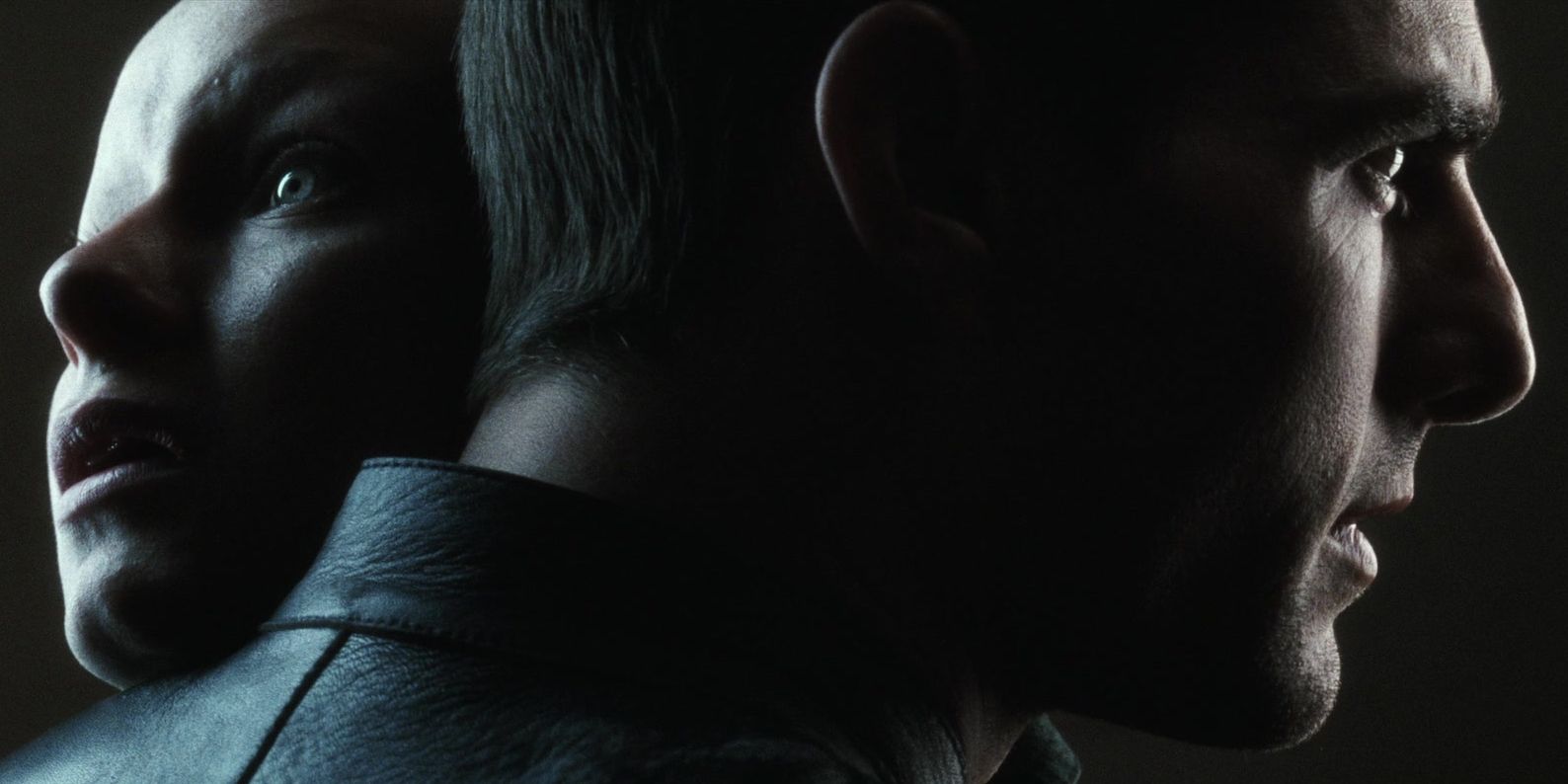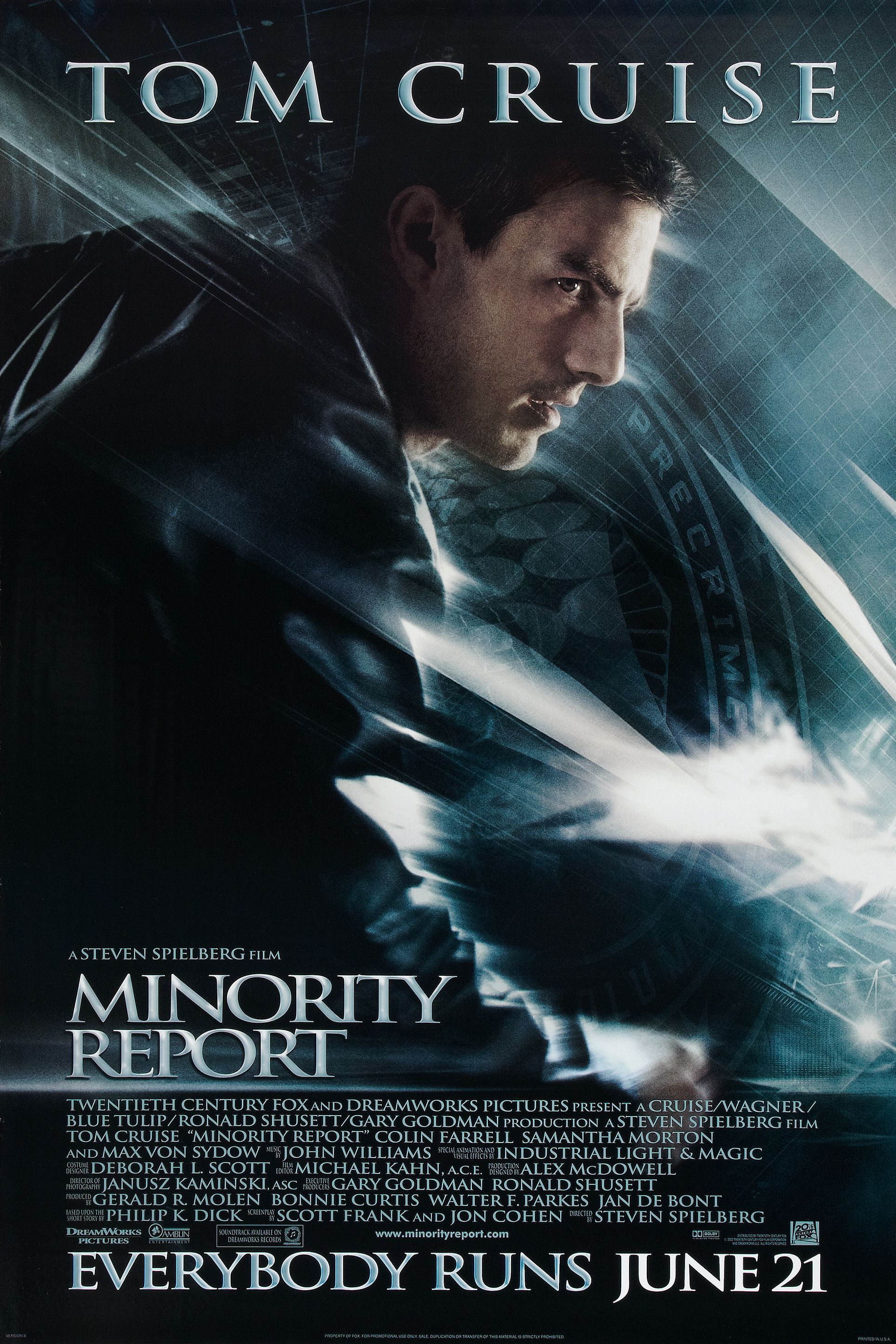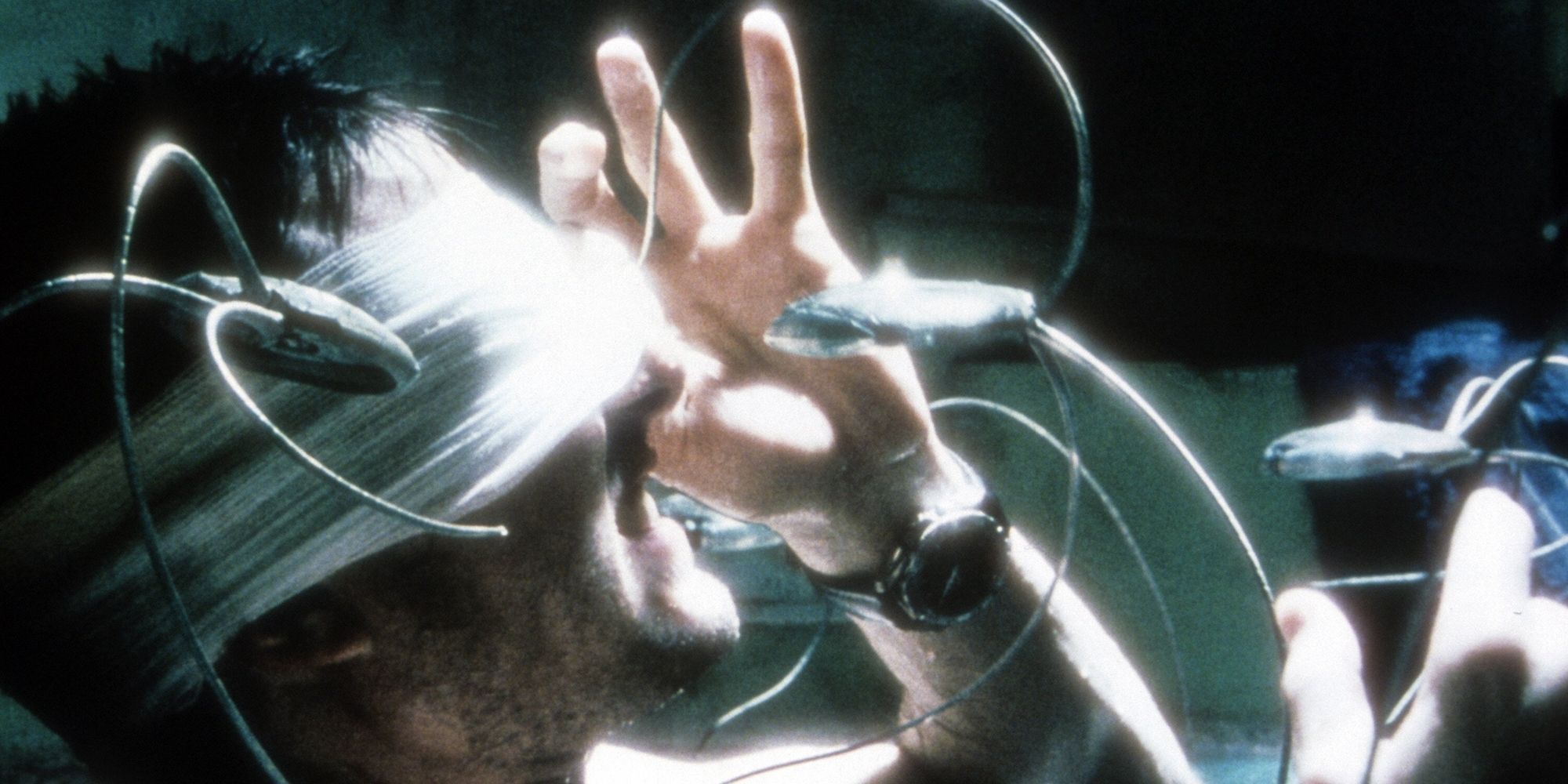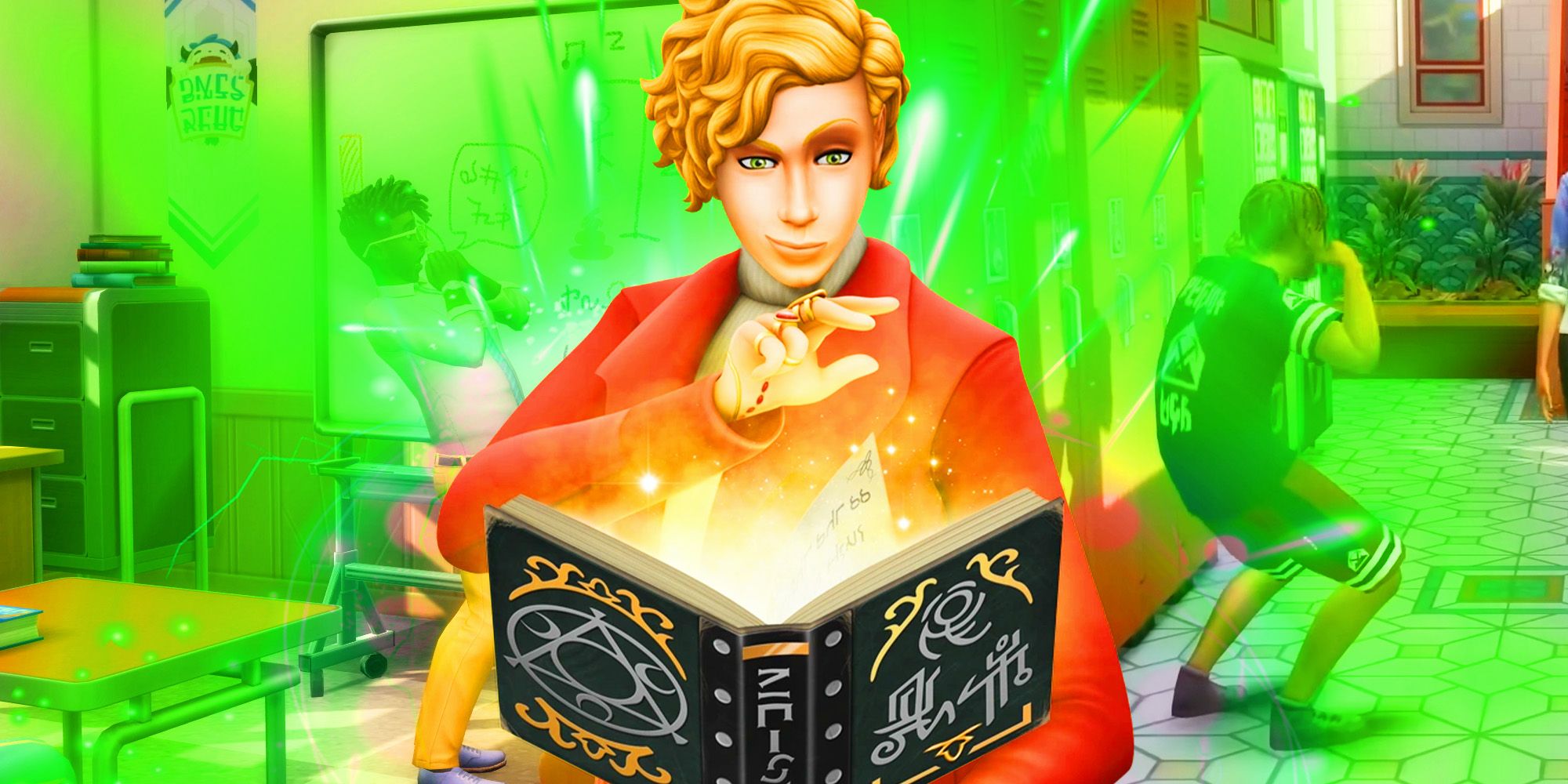The captivating orchestrations and dynamic camera movements characteristic of Steven Spielberg‘s cinematic masterpieces are what often cause audiences to associate his remarkable works with the enchanting concept of “movie magic.” However, his 2002 dystopian sci-fi thriller, <em>Minority Report</em>, intriguingly subverts that notion. Minority Report features Tom Cruise in the role of William Anderton, a detective immersed in a futuristic Precrime division. In this role, he receives transmitted premonitions of impending murders and must rely on his investigative talents to pinpoint the exact locations where these crimes will unfold. Anderton excels at his job until he becomes the prime suspect, thrusting him into a profound moral quandary that challenges his beliefs about fate and determinism as he fights to exonerate himself.
As one of Spielberg’s darkest and most unconventional films, the visual aesthetic of Minority Report poignantly reflects this theme. It stands out as one of Spielberg’s most visually distinct productions, featuring a harsh array of lighting and color choices that can initially challenge the viewer’s perception. To be frank, Minority Report is an intentionally unattractive film; however, for those of us who admire it, this characteristic is one of its most significant strengths.
Spielberg Aimed for ‘Minority Report’ to Be His Most Visually Unattractive Film
For Minority Report, Spielberg collaborated once again with the acclaimed cinematographer Janusz Kamiński, marking their sixth project together. After their powerful work on Schindler’s List, Kamiński established himself as Spielberg’s primary cinematographic partner, contributing his expertise to every Spielberg film since 1993. Their collaborative rapport has grown remarkably efficient over the years. For Minority Report, Spielberg explicitly instructed Kamiński to create “the ugliest, dirtiest movie” he had ever produced, setting the stage for a visually arresting experience.
Rising to the challenge, Kamiński devised a distinctly overexposed and washed-out visual aesthetic that starkly contrasts with the warm and inviting style typical of Spielberg’s most popular films. His signature technique of back-lighting and shooting against windows, featuring pools of light, has already lent a more muted appearance to Spielberg’s recent works compared to his earlier genre films. With Minority Report, this approach is taken to an extreme level. The film’s unique look is achieved through the overlighting of nearly every scene and utilizing a chemical process known as bleach bypassing, which effectively strips vibrant colors from the image. This distinctive method renders Minority Report almost monochromatic in certain scenes; the actors appear ghostly and pale, fluorescent light creates an unforgiving atmosphere, and any color that manages to emerge is predominantly blue-shifted. Each of these artistic choices aligns perfectly with the narrative, tone, and genre blend that Spielberg sought to convey.
How ‘Minority Report’ Expertly Merges Noir and Sci-Fi Through Its Visual Aesthetic
Minority Report embodies an unattractive aesthetic that mirrors the harshness of the world it portrays. The film transcends the boundaries of a mere sci-fi narrative, intertwining elements of noir, drawing from the bleak archetypes inherent to both genres. Protagonist Anderton, a drug-addicted detective who has lost everything, gradually realizes that his life’s work has been dedicated to condemning individuals to a fate of imprisonment for crimes they may never have committed. The flaws within the Precrime system coupled with the plot of a fugitive on the run reflect a distorted and brutal justice system, embodying the cynical worldview typical of noir narratives featuring detectives.
Moreover, the film delves deeply into the realm of hard science fiction. From the cutting-edge technology underpinning Precrime to the futuristic shopping malls and the rampant drug culture depicted, Minority Report portrays a grim, digitized future that revolves around consumption as a means of escape from life’s harsh truths; this stark visual narrative is matched by the film’s unyielding approach to lighting and color. Minority Report is intentionally discomforting to observe, as its dystopian world is far from a comforting place.
The Significance of Color in ‘Minority Report’: When Brightness Transforms the Narrative

Throughout Minority Report, there are only a few moments where the film embraces a more traditional color palette. The audience is given a respite from the relentless, fluorescent glare of the film when Anderton dreams of the final day he spent with his son. Additionally, at the film’s conclusion, when the Precrime initiative has been dismantled and the Precogs are allowed to live freely in an undisclosed location. The colors in these sequences profoundly communicate that the world is experiencing a different state—the oppressive qualities of the Precrime program and the harsh realities of the futuristic society are starkly contrasted by the film’s previously colorless aesthetic. The return of color signifies a positive change in the world; Anderton’s last cherished memory—a tragic day spent with his son at the pool—remains vibrant despite its sorrowful undertones. Similarly, the Precogs, who have been released from their mental confinement, finally witness color in their lives once more.
The 10 Best Steven Spielberg Movies Showcasing Stellar Performances, Ranked
Many remarkable actors have delivered their finest performances under Spielberg’s masterful direction.
The final scene featuring the Precogs, now colorful and whimsical, accompanied by Williams’ evocative score, sweeps high into the sky. This moment stands as one of the rare instances in the film where that classical Spielberg sense of movie magic truly shines, as it is the first moment where the world of Minority Report truly warrants such reverence. While the majority of the film is unyielding and uncompromising in its portrayal of a bleak sci-fi reality, this ending brings back the feelings of wonder, hope, and awe that define so many of Spielberg’s works. The ugliness dissipates, leaving a profound sense of beauty in its wake.

Film Details
Minority Report
- Release Date
-
June 21, 2002
- Runtime
-
145 minutes
- Writers
-
Scott Frank, Jon Cohen
- Franchise(s)
-
Minority Report

[nospin]Here you can find the original article; the photos and images used in our article also come from this source. We are not their authors; they have been used solely for informational purposes with proper attribution to their original source.[/nospin]






